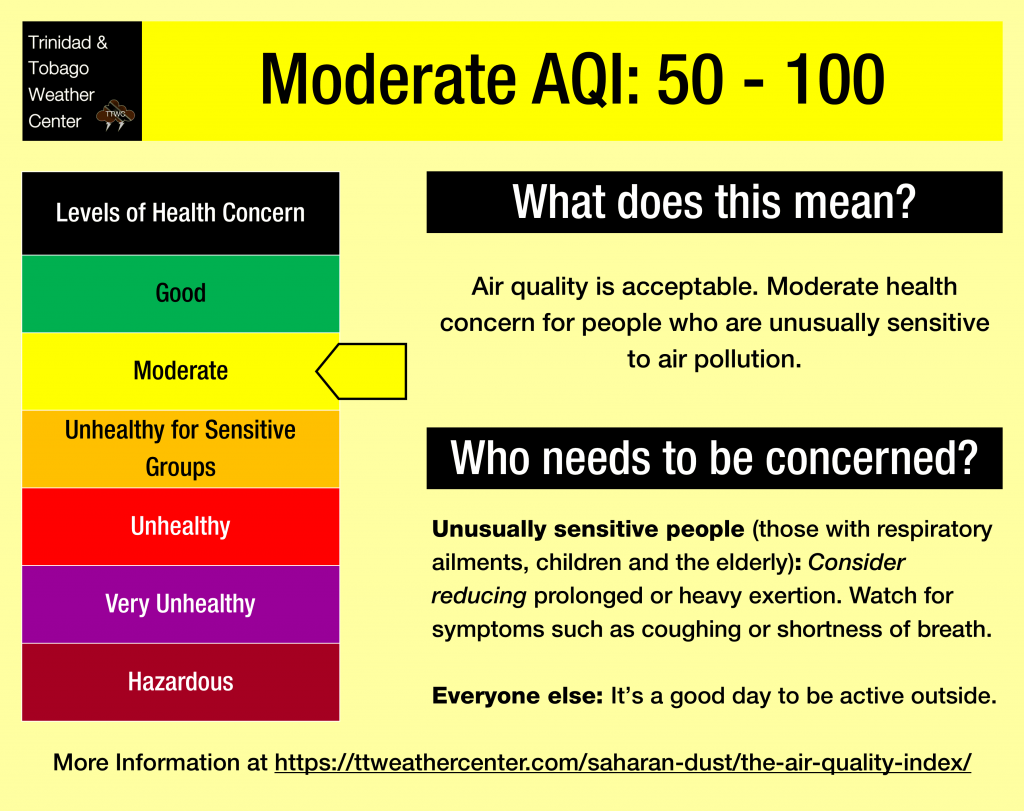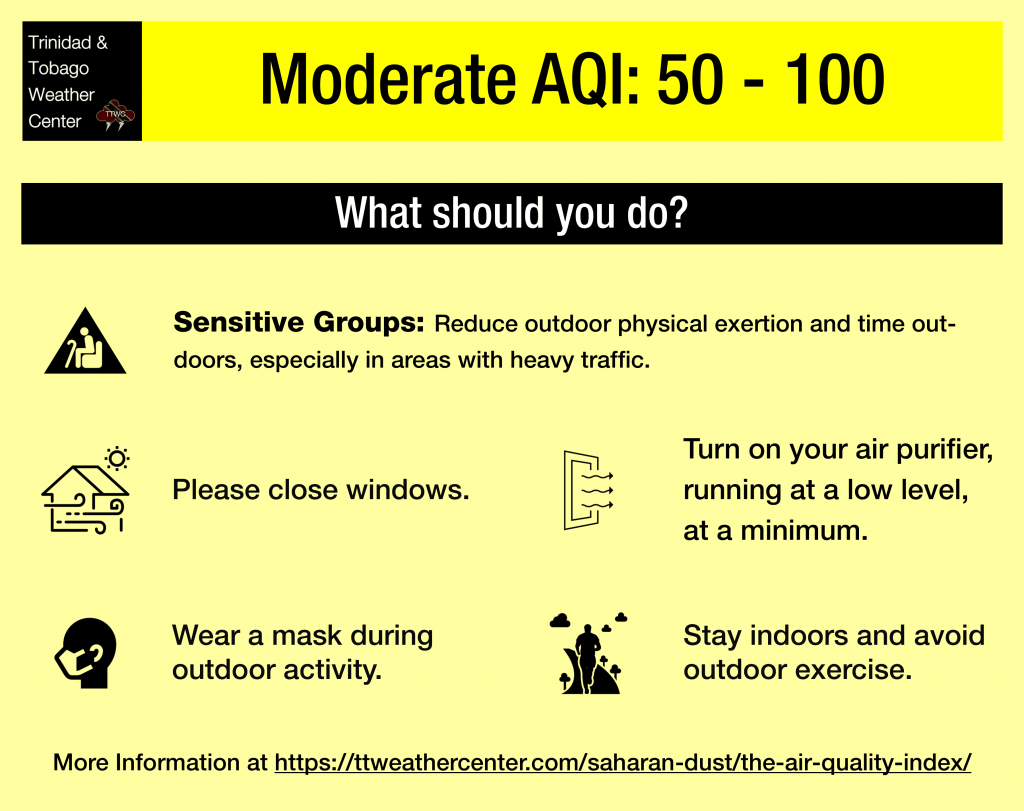Saharan Dust is forecast to remain at mild to moderate levels across Trinidad, Tobago, and the Lesser Antilles over the next week, with the next surge forecast to arrive by November 1st.
What you need to know
— Saharan Dust Surges: While there are no major surges of dust forecast to move across the region over the next 10 days, a moderate surge of dust is present across the Lesser Antilles and T&T through October 24th, and another moderate surge is forecast by November 1st across the region.
— Impacts: Through the next seven to ten days, air quality levels across Trinidad and Tobago are forecast to remain between good and moderate.
— What Should You Do: Sensitive groups are advised to take the necessary precautions, particularly during high traffic periods and in the vicinity of bushfires.
Current AQI Levels Across T&T
The official air quality monitoring stations from the Environmental Management Agency (EMA) at Arima, San Fernando, and Point Lisas are reporting good air quality levels. Stations at Beetham and Signal Hill, Tobago, are not reporting PM2.5 or PM10 data as of Monday afternoon.
These measurements are based on PM2.5 (particulates the size of 2.5 micrometers and smaller, usually associated with increases in Saharan Dust, vehicle exhaust, and smoke) and PM10 particulates.
Over the last 24 hours, visibility remained unaffected by Saharan Dust and smoke at the A.N.R. Robinson International Airport at Crown Point, Tobago, and at the Piarco International Airport, Trinidad.
Saharan Dust Forecast

Currently (Monday, October 23rd, 2023), a mild to moderate surge of Saharan Dust is present across the Lesser Antilles and Trinidad and Tobago following Hurricane Tammy’s passage and a low-level trough now west of the island chain. Concentrations are forecast to reduce by Tuesday afternoon across T&T, with little dust present through the end of the week.
By next Tuesday, November 1st, 2023, another moderate surge of Saharan Dust is forecast to move across the country and the reminder of the Lesser Antilles, reducing air quality and marginally affecting visibility.
Through the next seven to ten days, air quality levels across Trinidad and Tobago are forecast to remain between good and moderate. Air quality may be further reduced in the vicinity of bush or landfill fires.
What does this mean for you?


We’re in a period where the Intertropical Convergence Zone and tropical waves and occasional tropical cyclones may shield Trinidad and Tobago from the Saharan Dust events. While tropical waves play a notable role in moving dust across the Atlantic and the Eastern Caribbean, these periodic tropical waves also improve air quality.
The concentration of the dust that follows the wave depends on its strength as it moves off the West African Coast. This is because of stronger thunderstorms across Central Africa. As strong winds move downward and outward from these thunderstorms, the wind kicks up dust as it moves across parts of the Saharan Desert and transports it into the upper atmosphere. This “plume” of dust follows the axis of the wave as it progresses westward into the Atlantic.
Dust that makes it into the upper levels of the atmosphere can then get transported across the Atlantic Ocean. The plumes of dust eventually affect the Eastern Caribbean.
Larger, more concentrated plumes of Saharan dust begin in April and continue through November.











